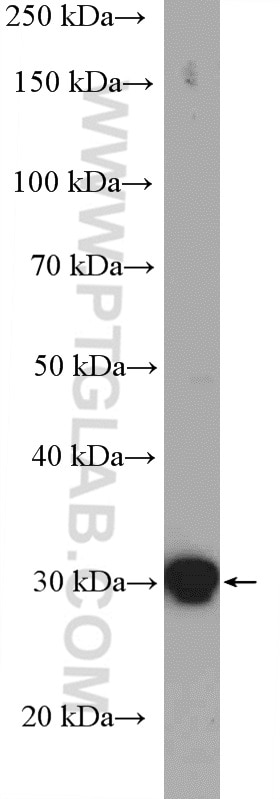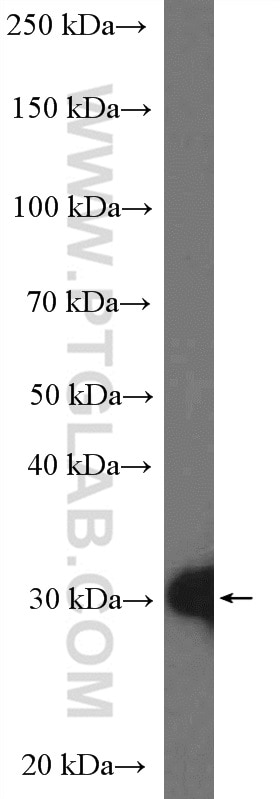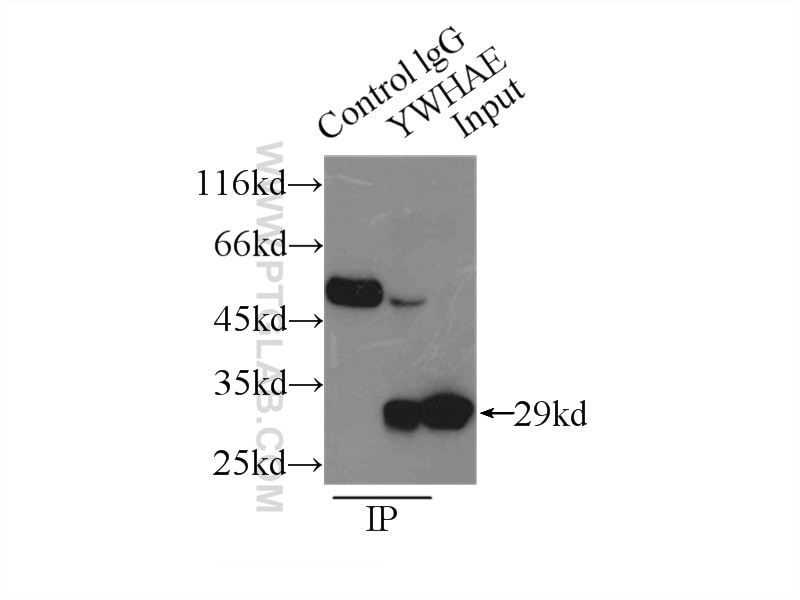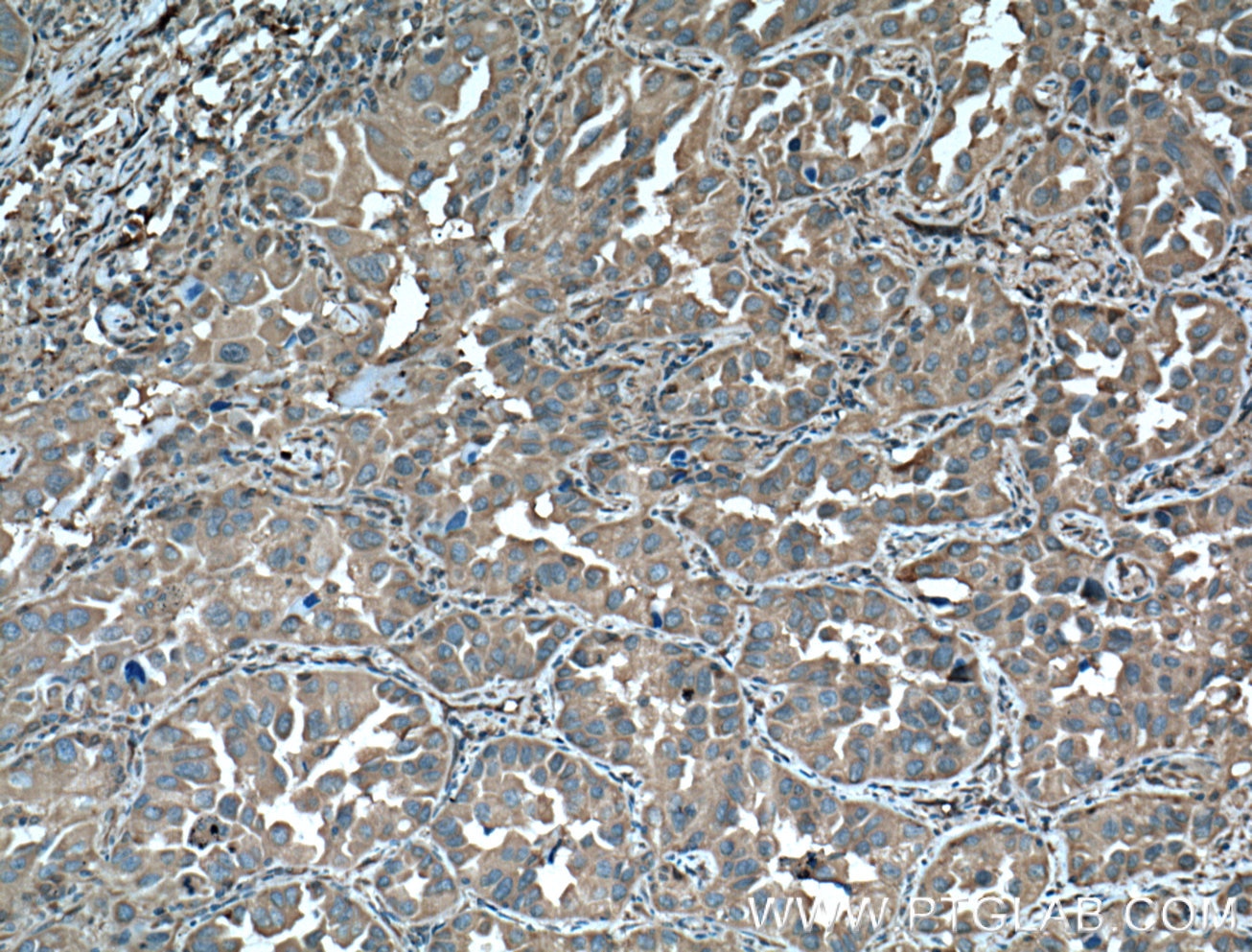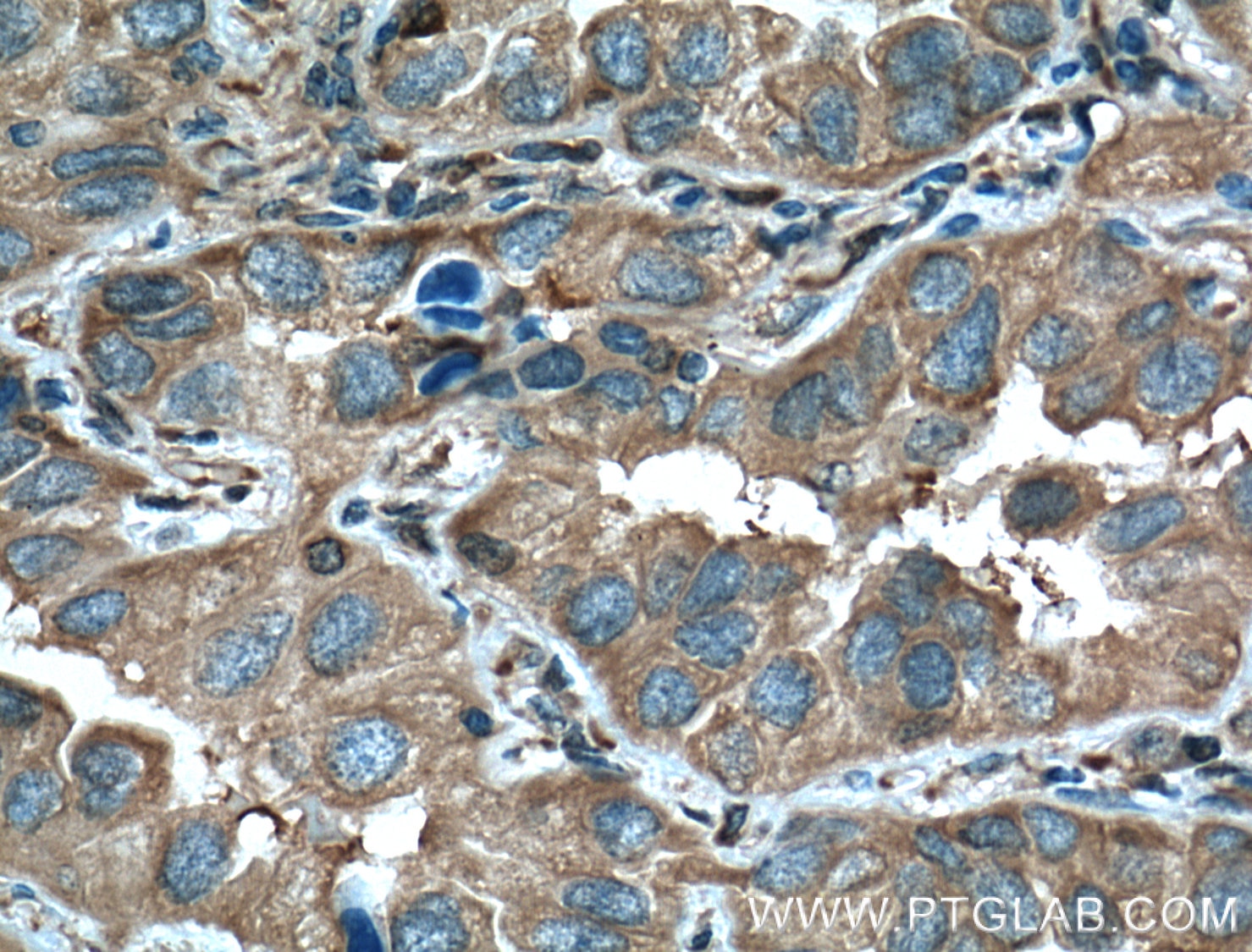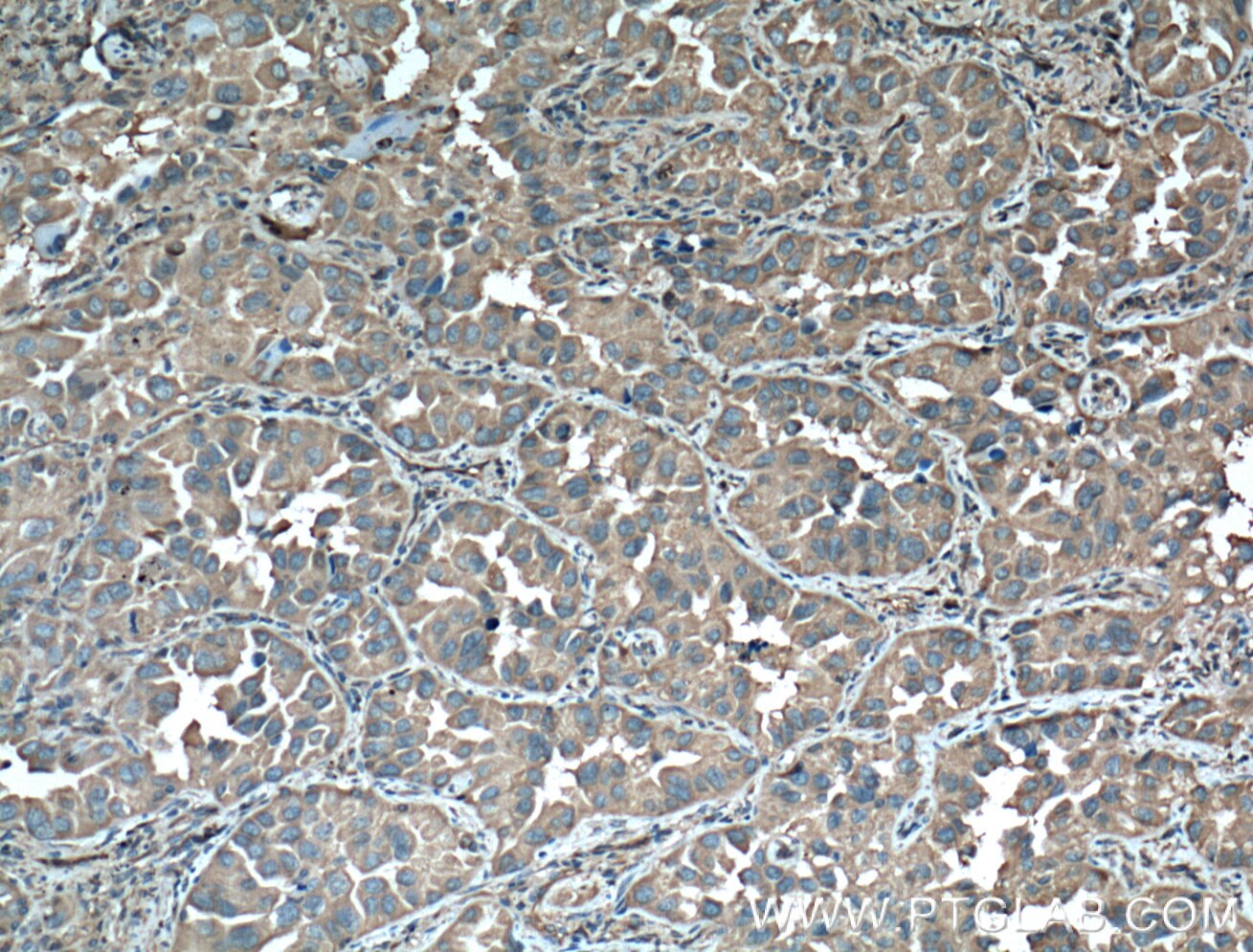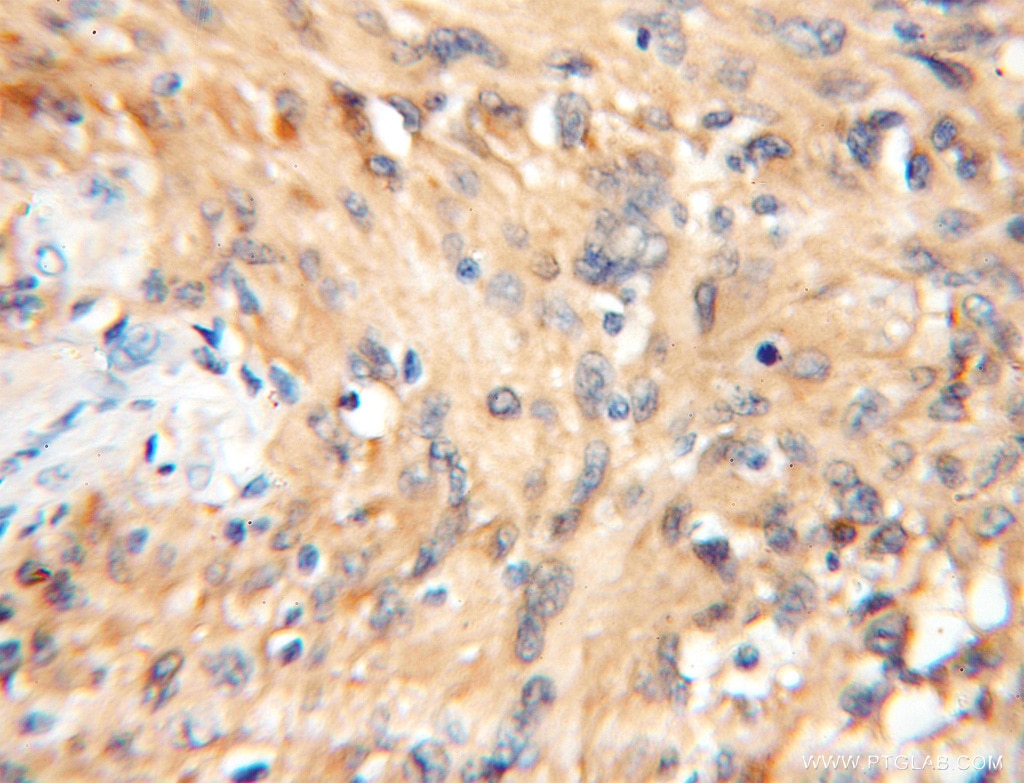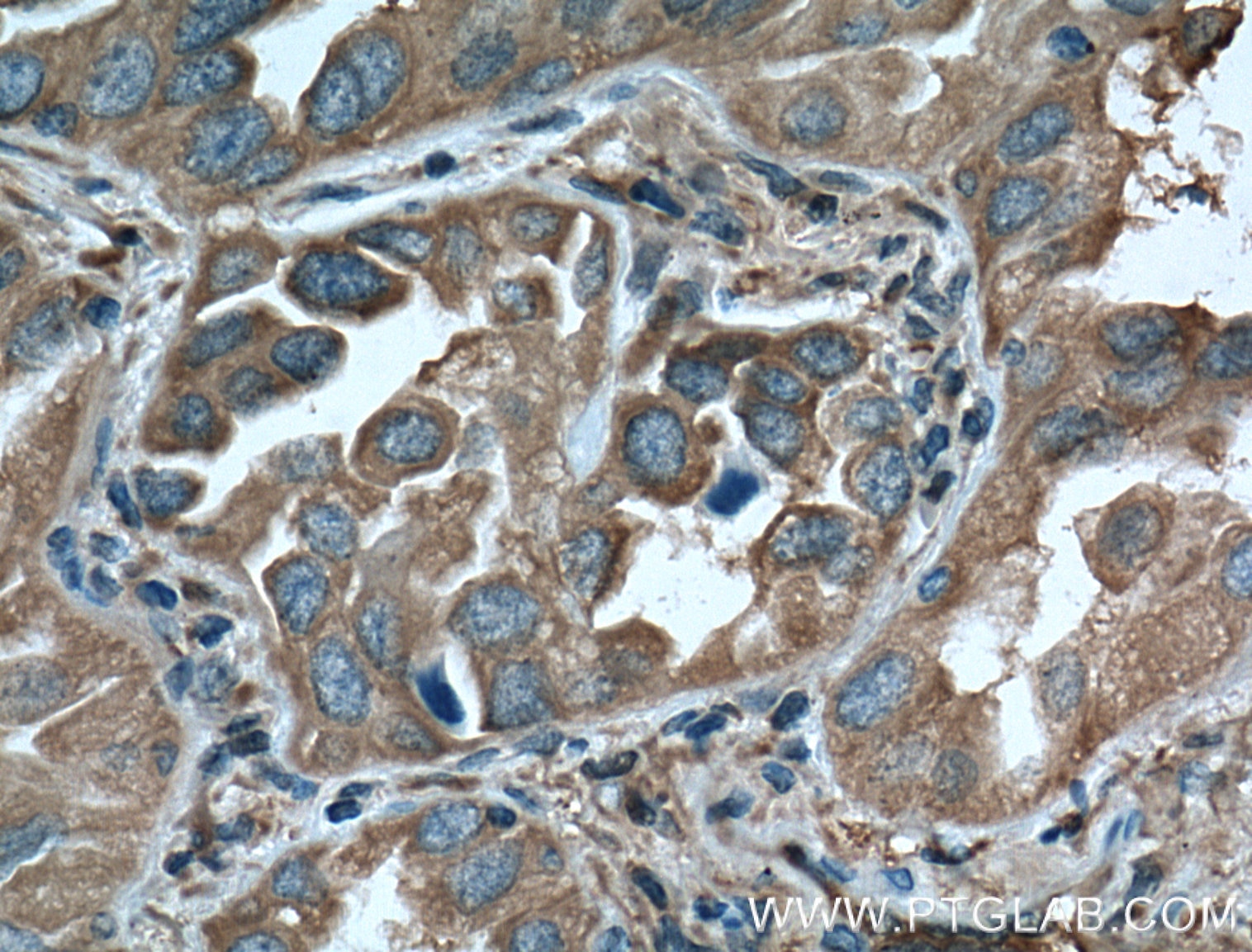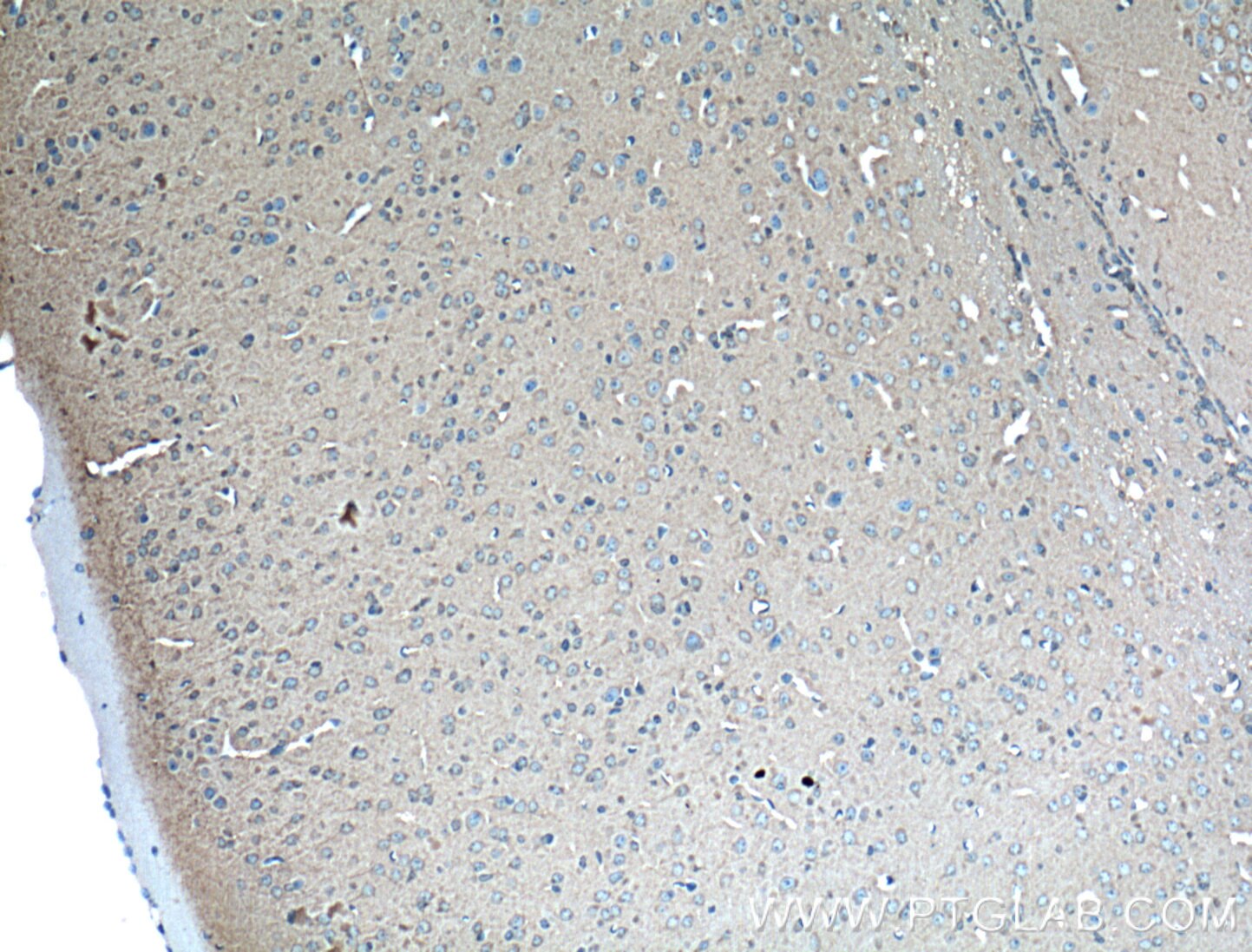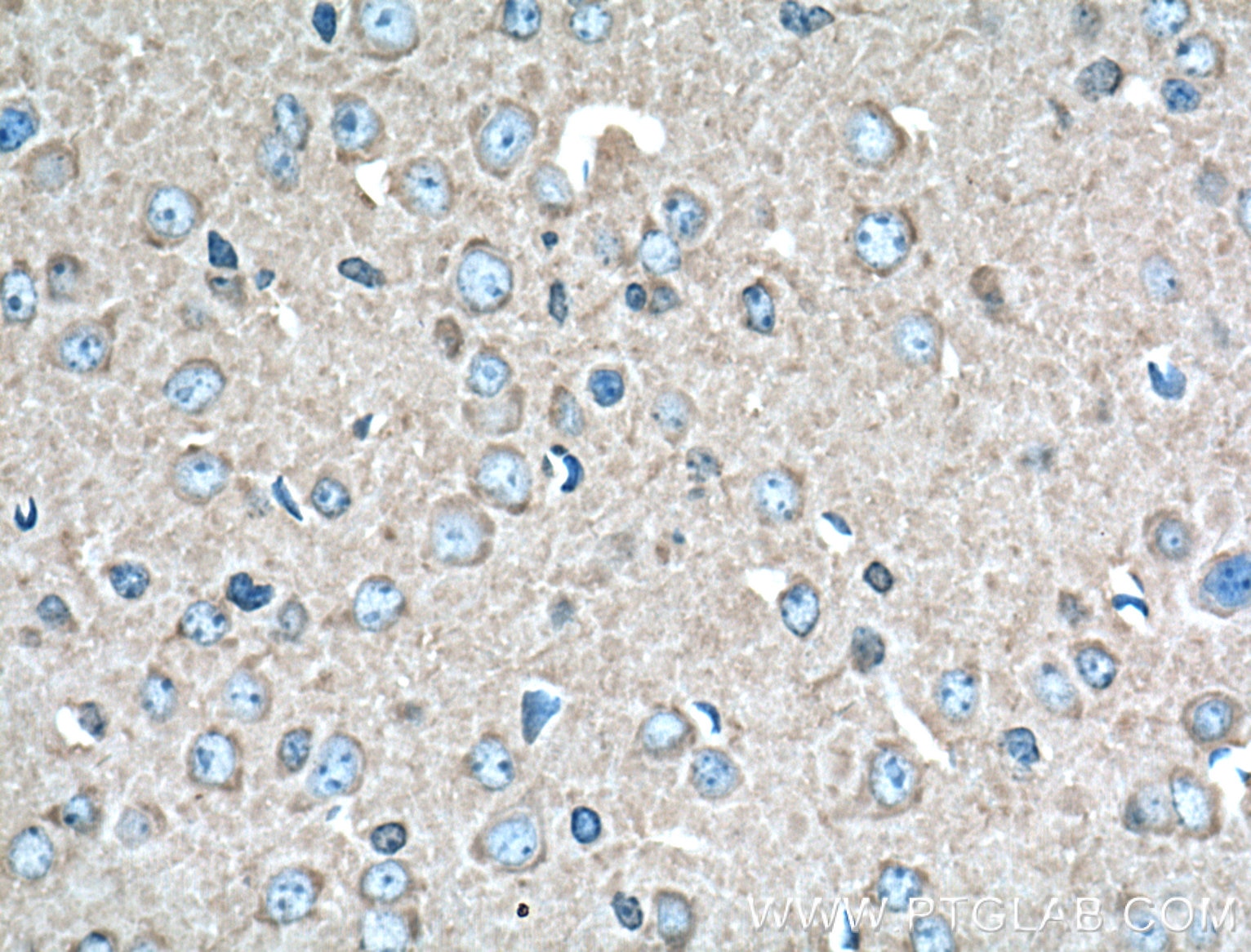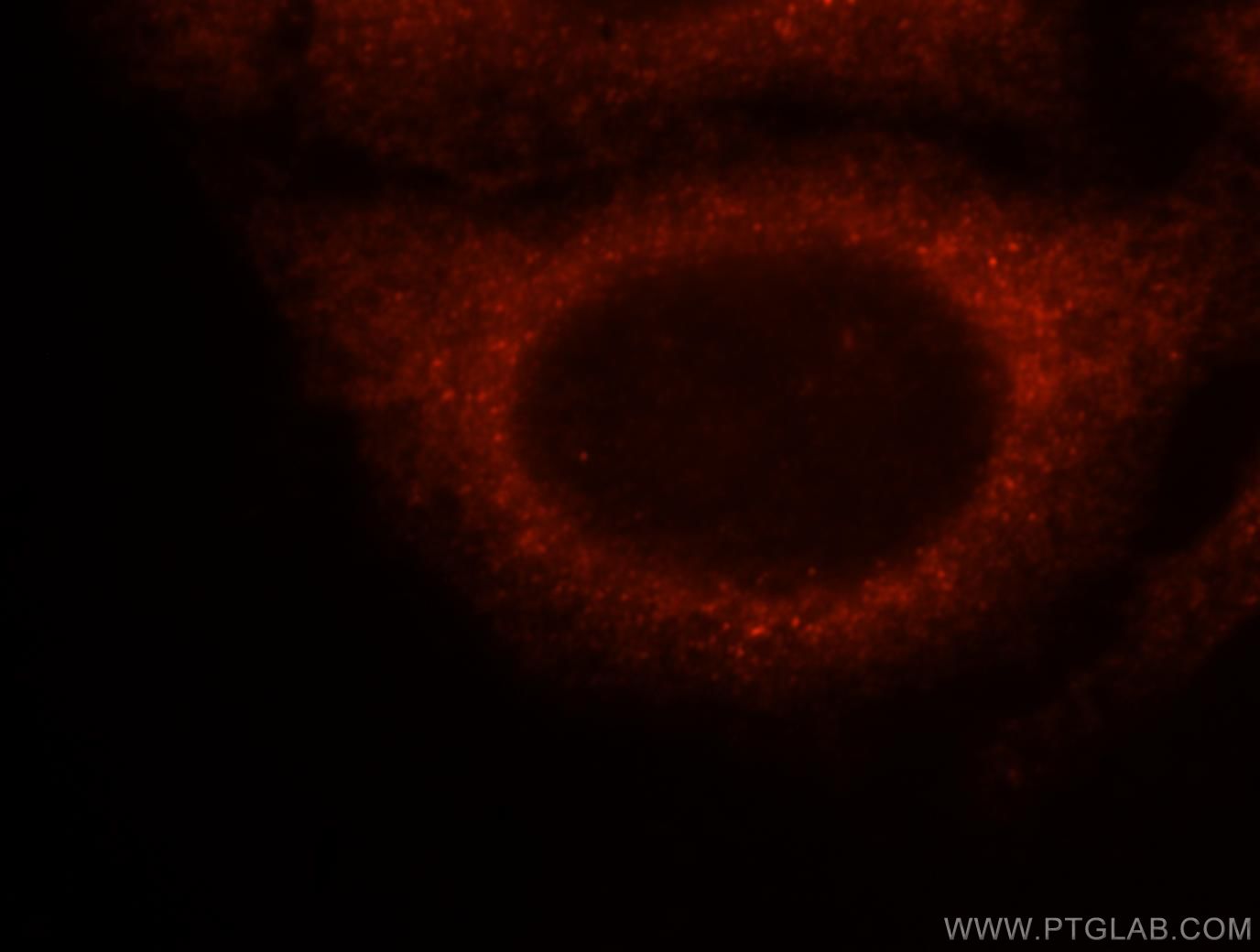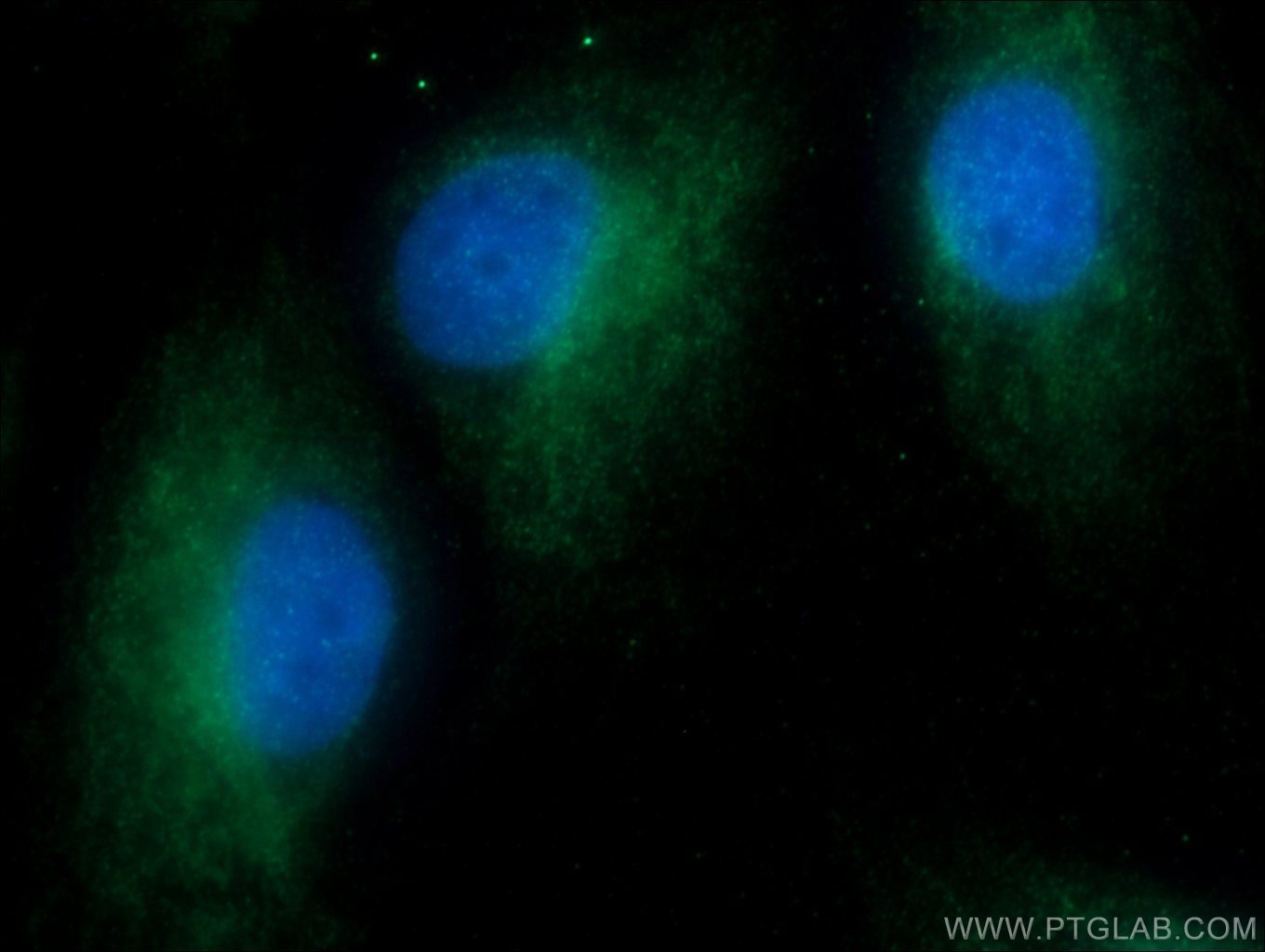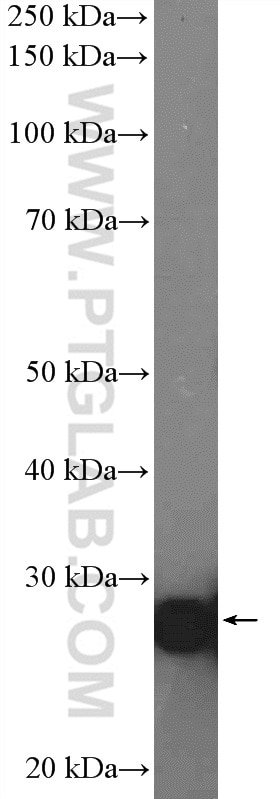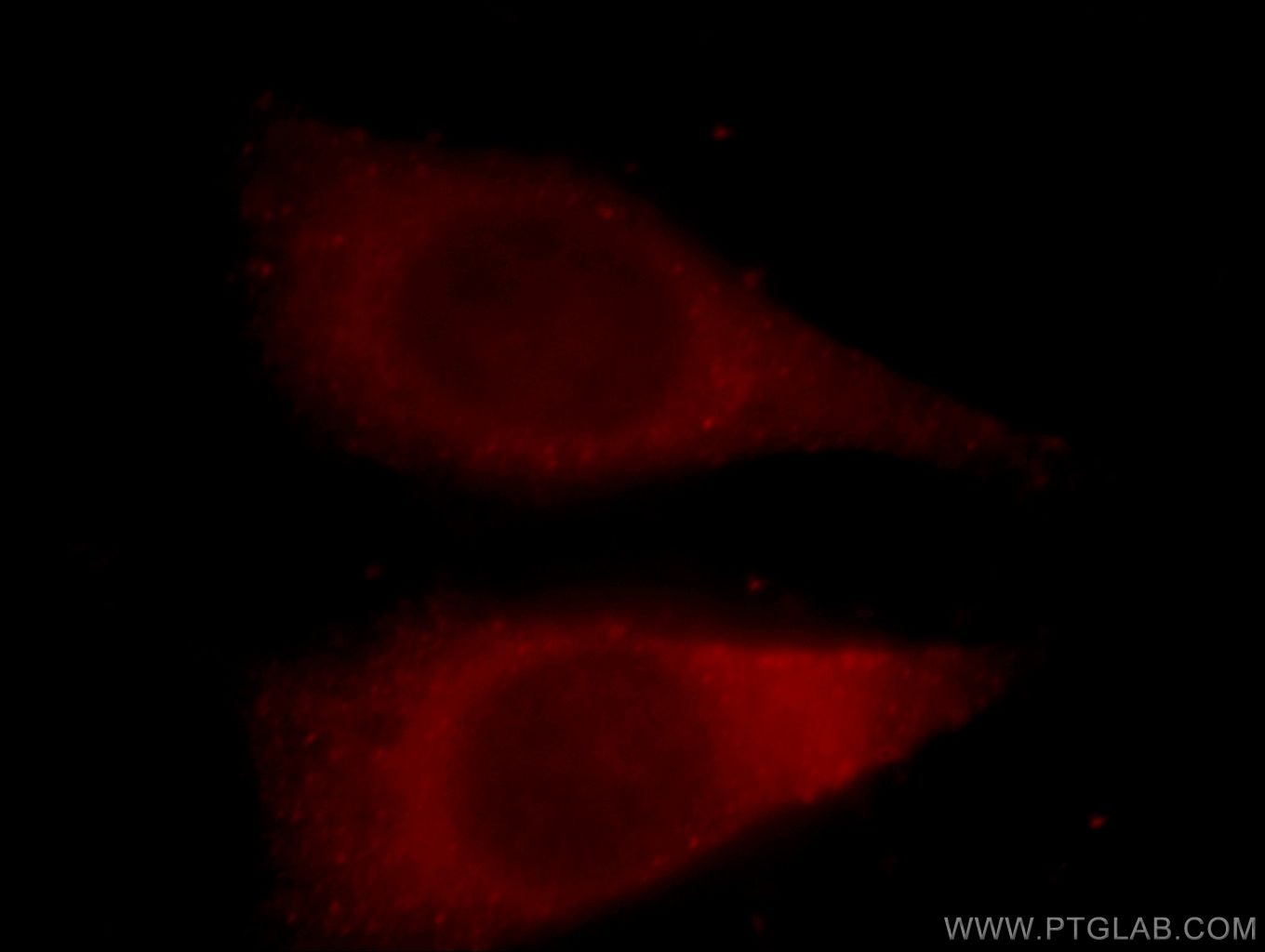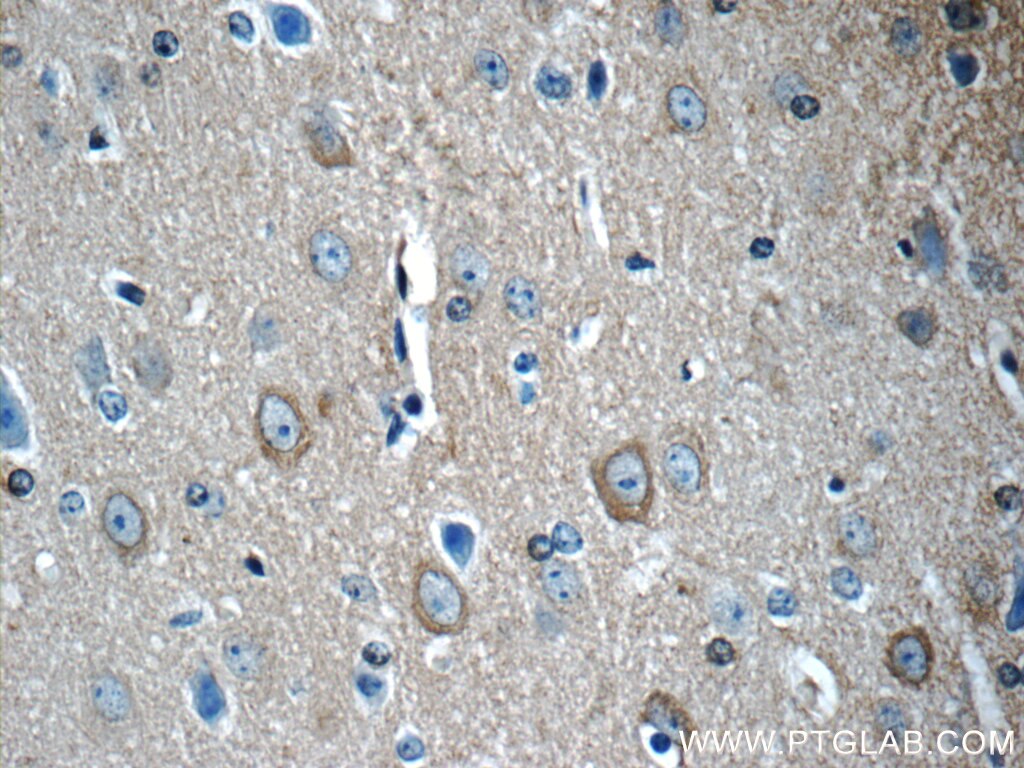- Phare
- Validé par KD/KO
Anticorps Polyclonal de lapin anti-14-3-3 Epsilon
14-3-3 Epsilon Polyclonal Antibody for WB, IP, IF, IHC, ELISA
Hôte / Isotype
Lapin / IgG
Réactivité testée
Humain, rat, souris
Applications
WB, IHC, IF/ICC, IP, ELISA
Conjugaison
Non conjugué
N° de cat : 11648-2-AP
Synonymes
Galerie de données de validation
Applications testées
| Résultats positifs en WB | cellules A375, cellules HeLa |
| Résultats positifs en IP | cellules A375 |
| Résultats positifs en IHC | tissu de cancer du poumon humain, tissu cérébral de souris, tissu de gliome humain il est suggéré de démasquer l'antigène avec un tampon de TE buffer pH 9.0; (*) À défaut, 'le démasquage de l'antigène peut être 'effectué avec un tampon citrate pH 6,0. |
| Résultats positifs en IF/ICC | cellules HepG2 |
Dilution recommandée
| Application | Dilution |
|---|---|
| Western Blot (WB) | WB : 1:500-1:5000 |
| Immunoprécipitation (IP) | IP : 0.5-4.0 ug for 1.0-3.0 mg of total protein lysate |
| Immunohistochimie (IHC) | IHC : 1:50-1:500 |
| Immunofluorescence (IF)/ICC | IF/ICC : 1:10-1:100 |
| It is recommended that this reagent should be titrated in each testing system to obtain optimal results. | |
| Sample-dependent, check data in validation data gallery | |
Applications publiées
| KD/KO | See 2 publications below |
| WB | See 14 publications below |
| IF | See 5 publications below |
| IP | See 3 publications below |
Informations sur le produit
11648-2-AP cible 14-3-3 Epsilon dans les applications de WB, IHC, IF/ICC, IP, ELISA et montre une réactivité avec des échantillons Humain, rat, souris
| Réactivité | Humain, rat, souris |
| Réactivité citée | Humain, souris |
| Hôte / Isotype | Lapin / IgG |
| Clonalité | Polyclonal |
| Type | Anticorps |
| Immunogène | 14-3-3 Epsilon Protéine recombinante Ag2247 |
| Nom complet | tyrosine 3-monooxygenase/tryptophan 5-monooxygenase activation protein, epsilon polypeptide |
| Masse moléculaire calculée | 255 aa, 29 kDa |
| Poids moléculaire observé | 29-32 kDa |
| Numéro d’acquisition GenBank | BC000179 |
| Symbole du gène | 14-3-3E |
| Identification du gène (NCBI) | 7531 |
| Conjugaison | Non conjugué |
| Forme | Liquide |
| Méthode de purification | Purification par affinité contre l'antigène |
| Tampon de stockage | PBS avec azoture de sodium à 0,02 % et glycérol à 50 % pH 7,3 |
| Conditions de stockage | Stocker à -20°C. Stable pendant un an après l'expédition. L'aliquotage n'est pas nécessaire pour le stockage à -20oC Les 20ul contiennent 0,1% de BSA. |
Informations générales
14-3-3 Epsilon (also known as YWHAE) is a member of 14-3-3 proteins which were the first phosphoserine/phosphothreonine-binding proteins to be discovered. 14-3-3 family members interact with a wide spectrum of proteins and possess diverse functions. Mammals express seven distinct 14-3-3 isoforms (gamma, epsilon, beta, zeta, sigma, theta, tau) that form multiple homo- and hetero- dimmers. 14-3-3 proteins display the highest expression levels in the brain, and have been implicated in several neurodegenerative diseases, including Alzheimer's disease and amyotrophic lateral sclerosis. This antibody was raised against full-length 14-3-3 Epsilon.
Protocole
| Product Specific Protocols | |
|---|---|
| WB protocol for 14-3-3 Epsilon antibody 11648-2-AP | Download protocol |
| IHC protocol for 14-3-3 Epsilon antibody 11648-2-AP | Download protocol |
| IF protocol for 14-3-3 Epsilon antibody 11648-2-AP | Download protocol |
| IP protocol for 14-3-3 Epsilon antibody 11648-2-AP | Download protocol |
| FC protocol for 14-3-3 Epsilon antibody 11648-2-AP | Download protocol |
| Standard Protocols | |
|---|---|
| Click here to view our Standard Protocols |
Publications
| Species | Application | Title |
|---|---|---|
Nat Immunol A phosphomimetic-based mechanism of dengue virus to antagonize innate immunity. | ||
Nat Commun Endothelial discoidin domain receptor 1 senses flow to modulate YAP activation | ||
Cell Host Microbe Zika Virus NS3 Mimics a Cellular 14-3-3-Binding Motif to Antagonize RIG-I- and MDA5-Mediated Innate Immunity. | ||
EMBO J AKT2 reduces IFNβ1 production to modulate antiviral responses and systemic lupus erythematosus. | ||
Haematologica Comparative analysis of ChAdOx1 nCoV-19 and Ad26.COV2.S SARS-CoV-2 vector vaccines. | ||
Neurobiol Dis Stabilization of 14-3-3 protein-protein interactions with Fusicoccin-A decreases alpha-synuclein dependent cell-autonomous death in neuronal and mouse models |
